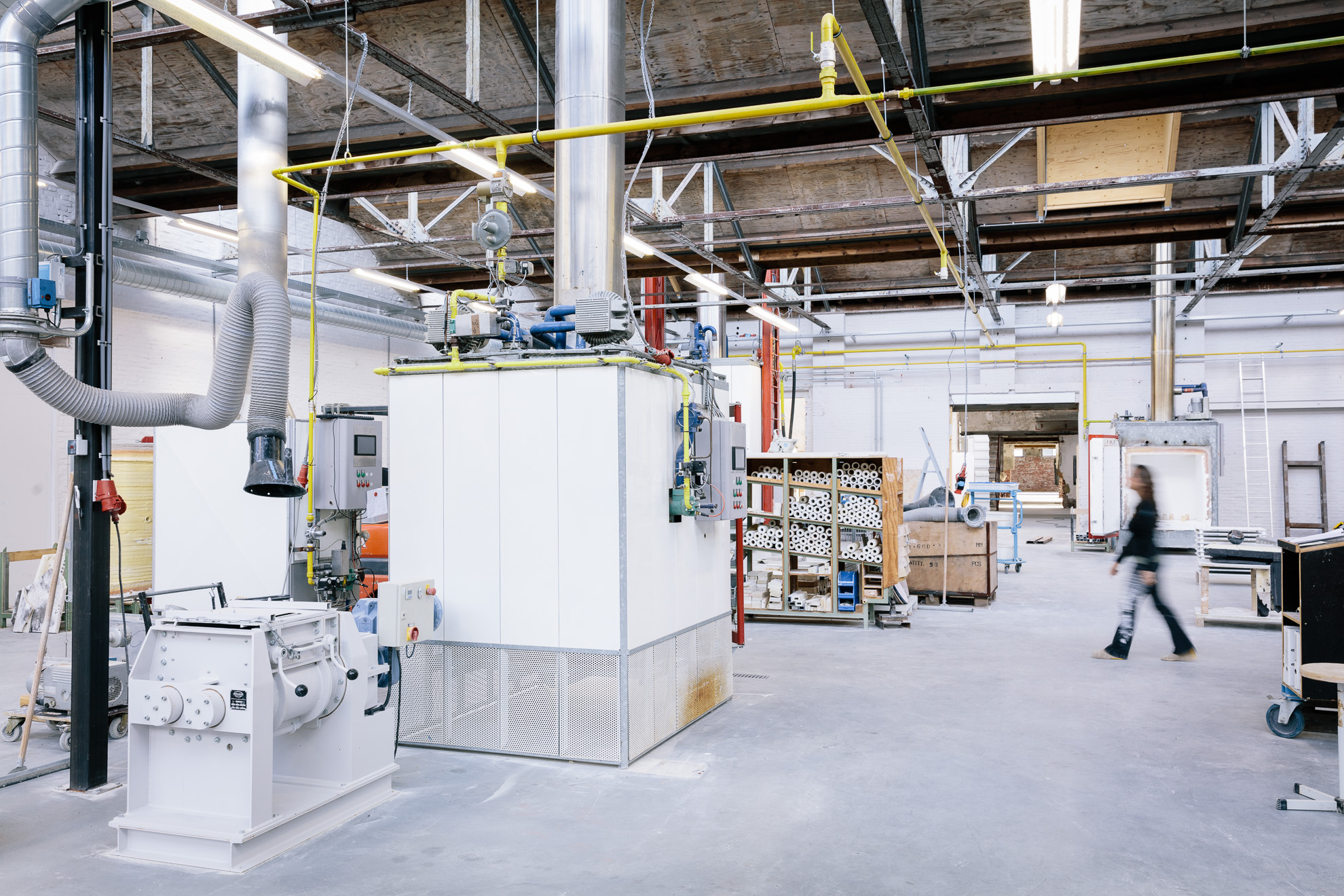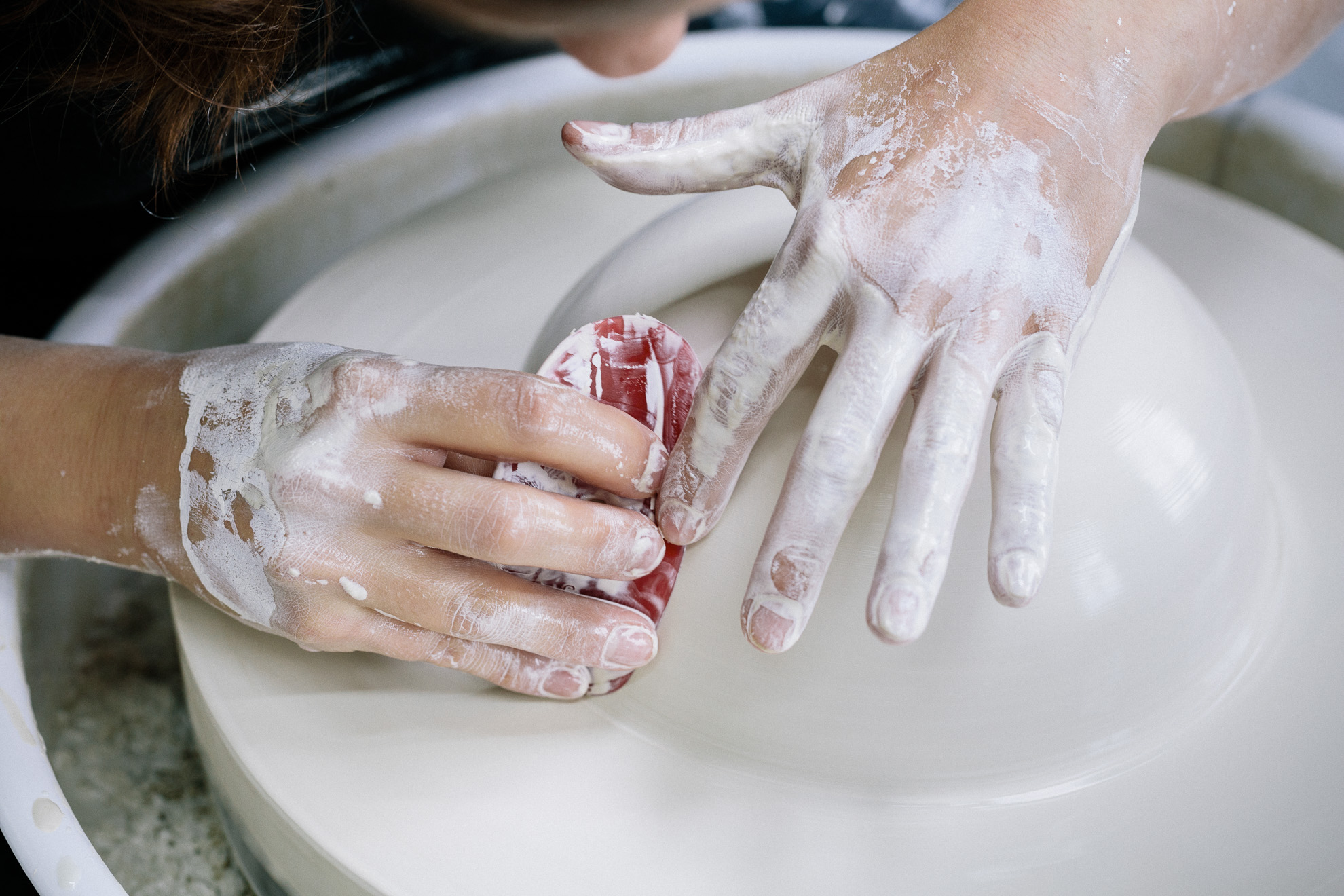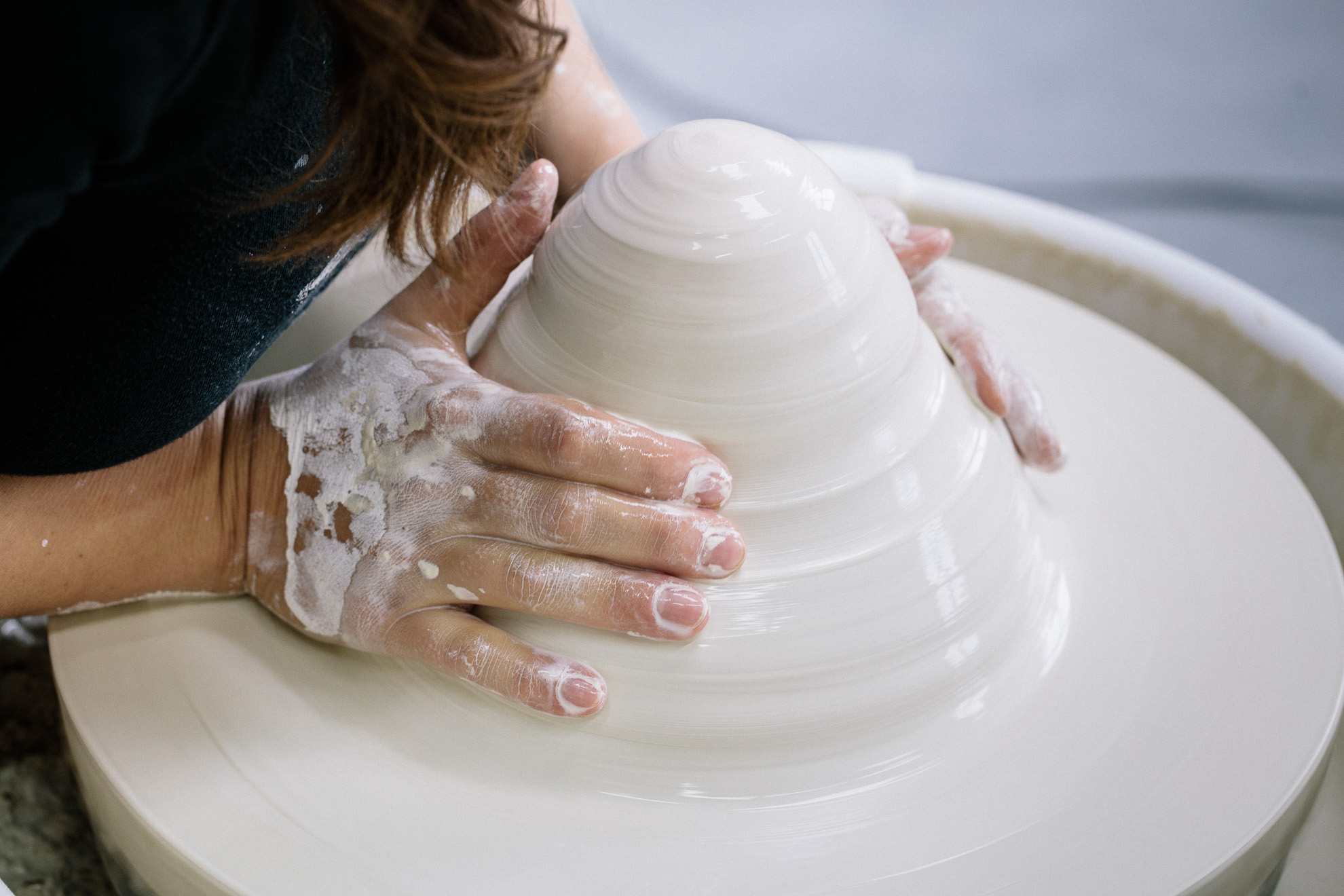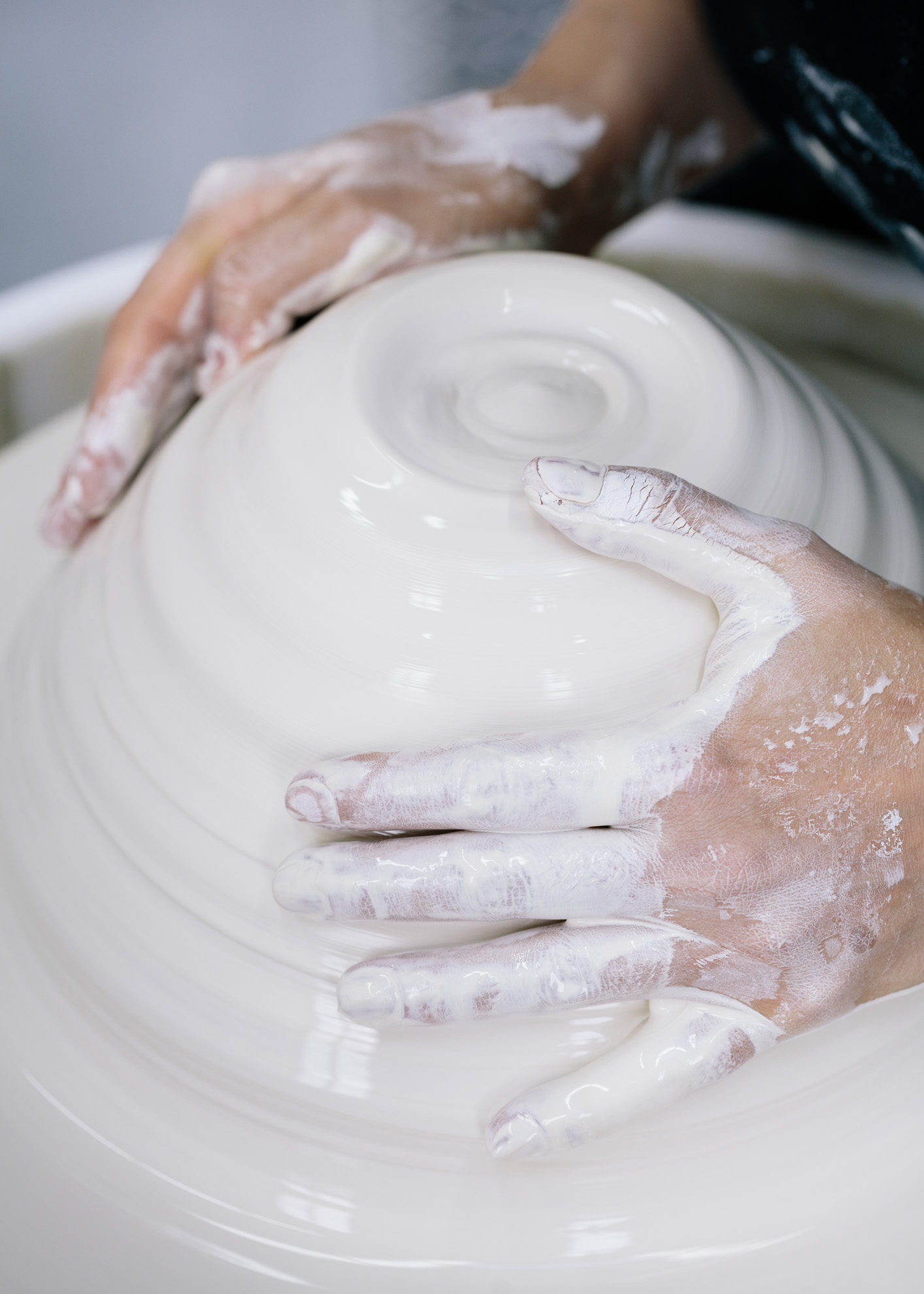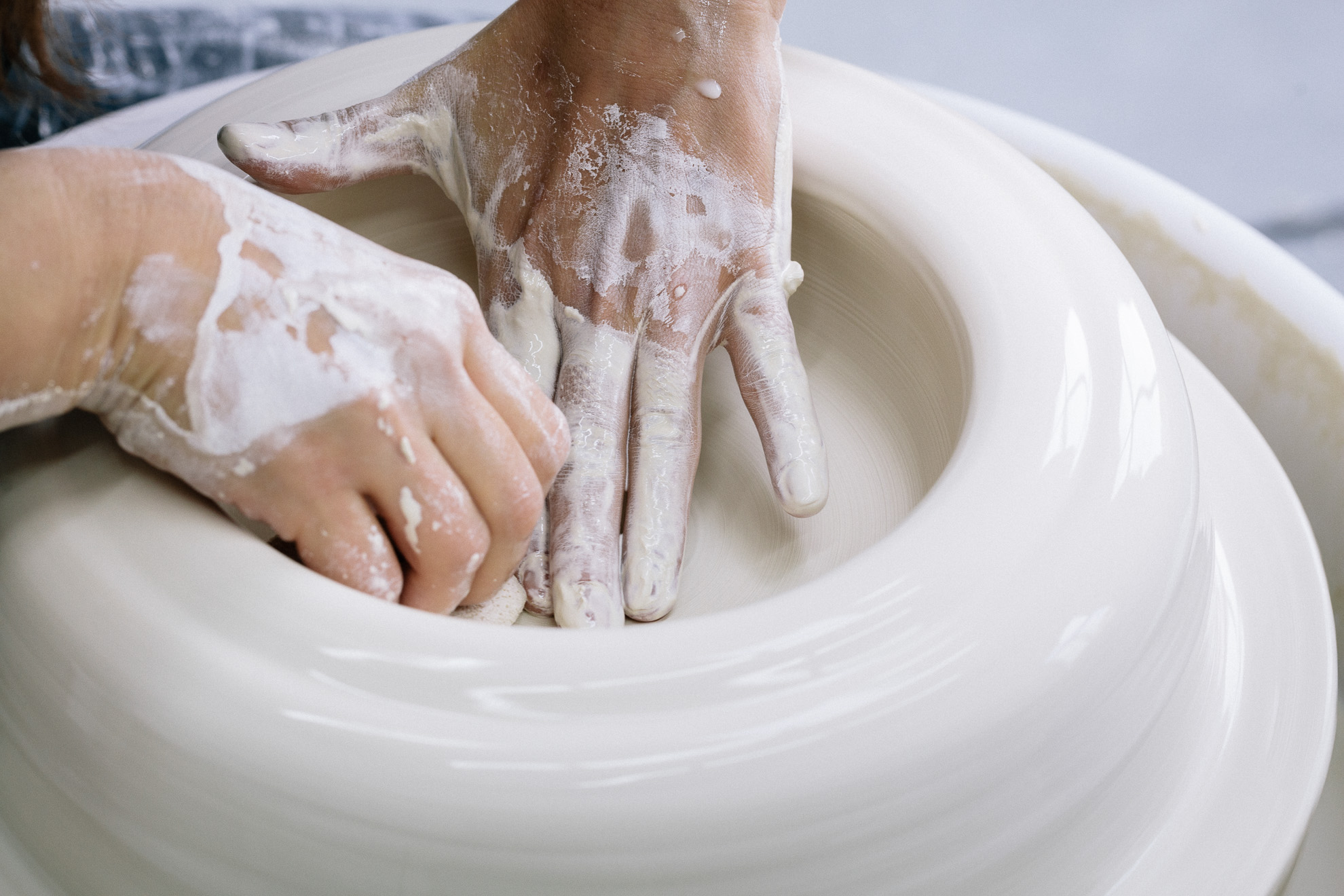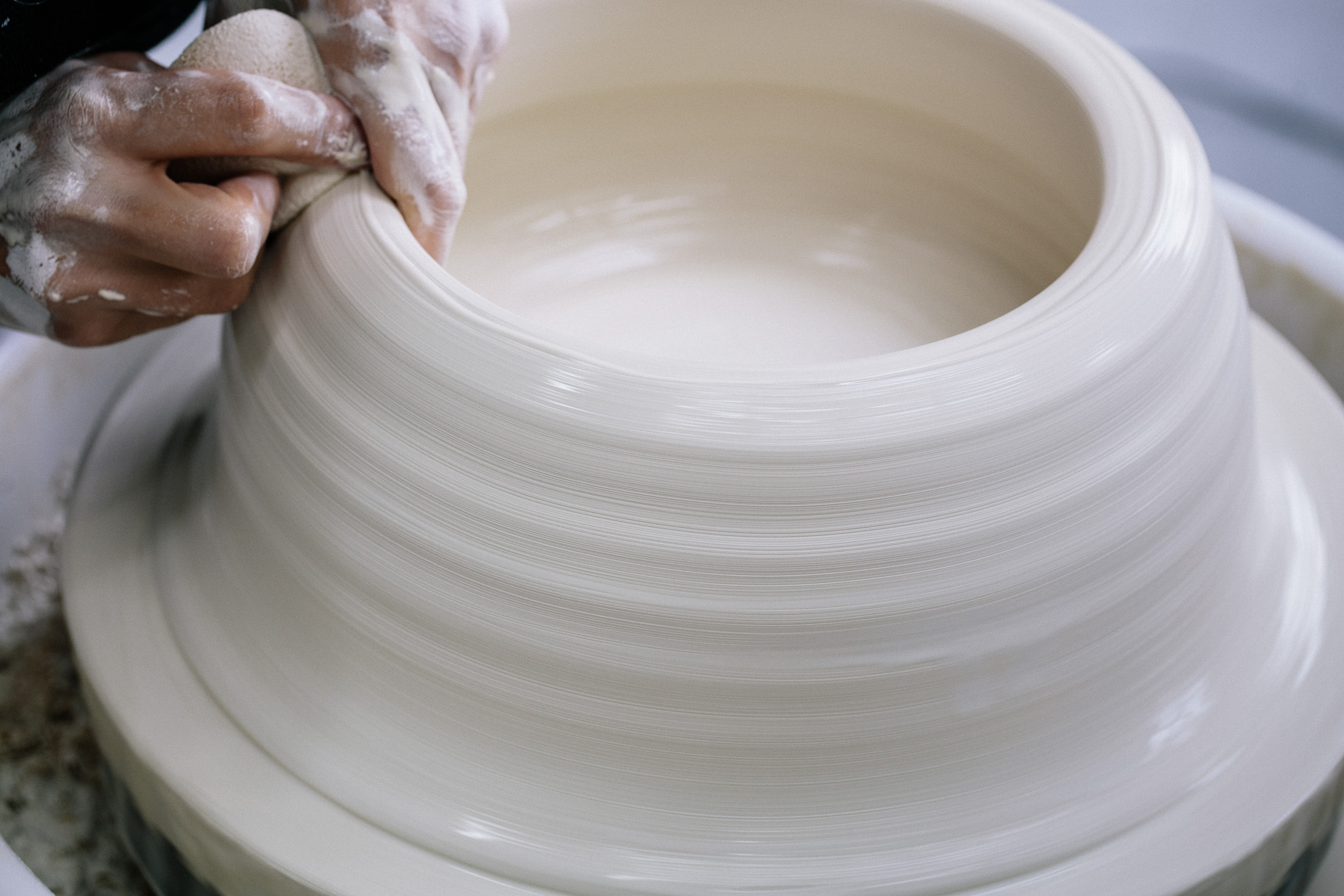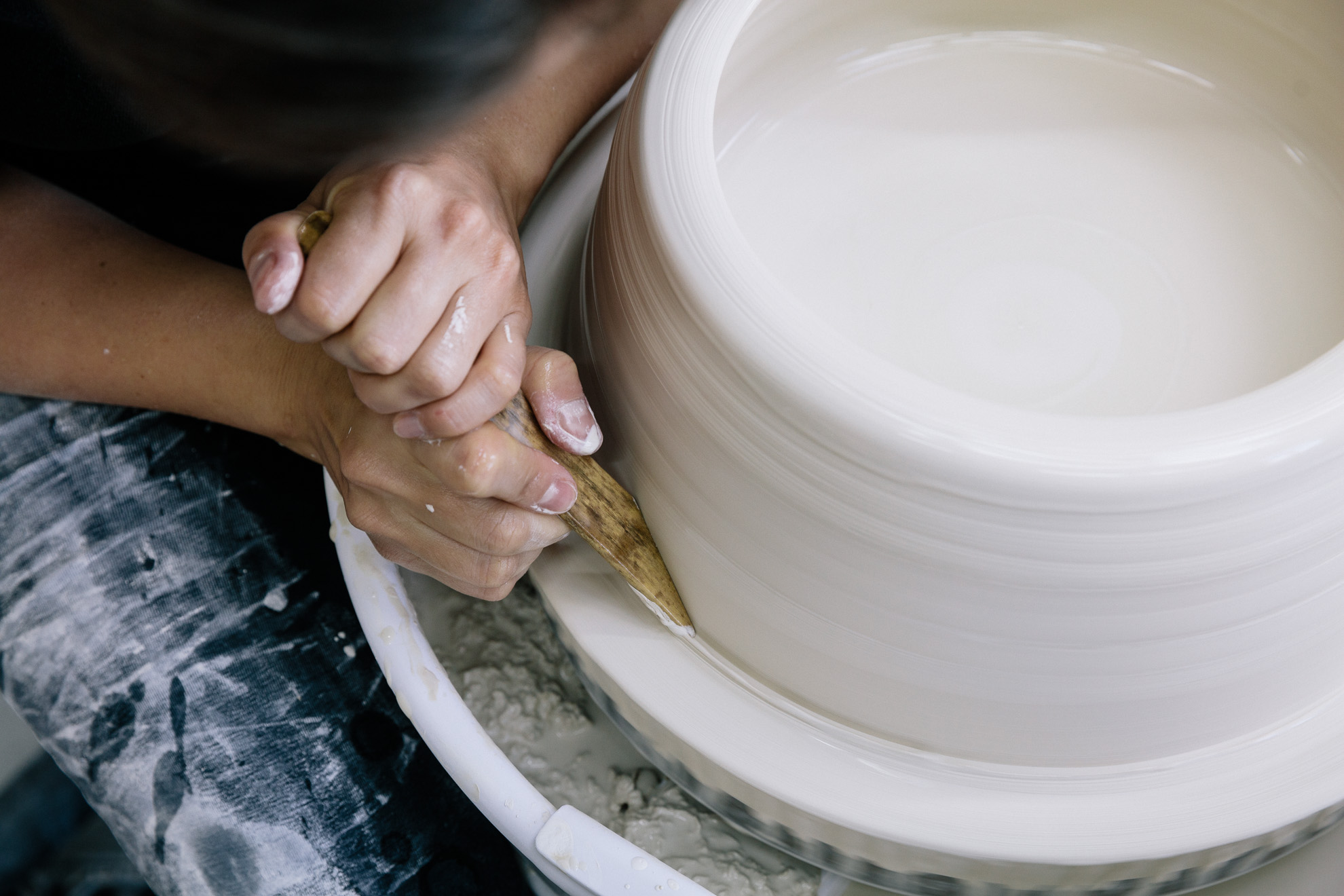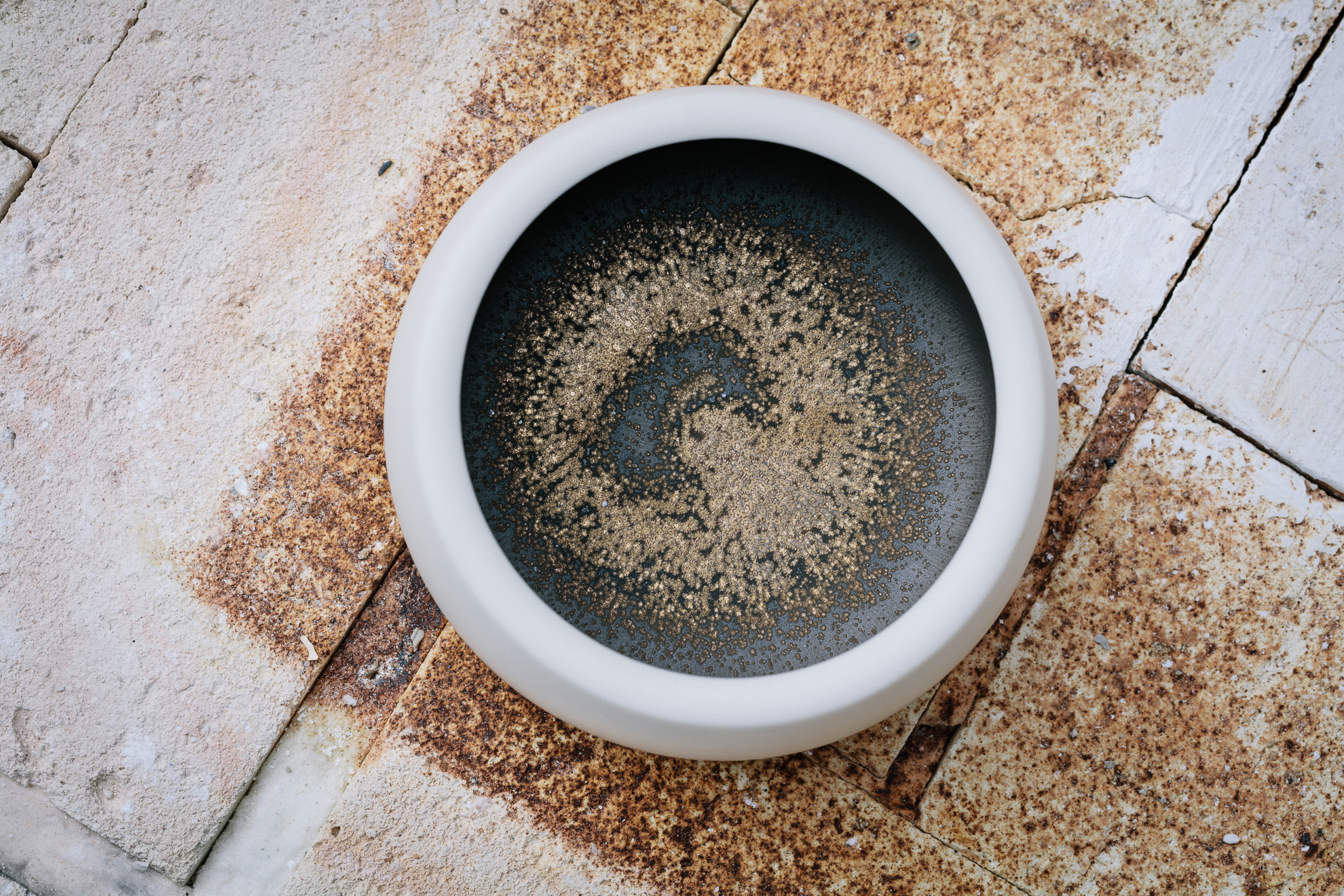The Turkish ceramist Ipek Kotan has been living in the Occident for two decades now, creating minimalist vessels that perpetuate Oriental traditions. The artist is a member of formforum Switzerland.
Art Aurea Your work stems from a visceral need to create with your hands, you say.
Ipek Kotan I feel most fulfilled when I lose myself in materials, textures, forms, colors, proportions and details. Working with my hands is not only an urge but central to my existence. I’ve tried jobs in the past, before starting my work with ceramics, where I worked in offices and wore suits. But denying myself the pleasure of getting my hands dirty and creating objects made me miserable.
AA The second important thing for you is the deep connection to the vessel form.
IK The connection to the vessel form comes from having grown up in Turkey where from an early age I was exposed to archeology. Since then I’ve had the chance to live in different parts of the world and the more places I saw, the more I realized that humans, no matter where they live or what era they live in, have more similarities than differences. Vessels being one of the oldest and most commonly discovered objects in archeological sites the world over is to me evidence of the universality of the human experience. The vessel has been around for at least 30,000 years. Both in a metaphysical and pragmatic sense it is so tightly woven into the story of humankind. I can’t think of a better object to use as the foundation of my work to show that we are all connected and part of a much bigger picture.
AA You strive to perfect every detail in your vessels.
IK One of my earliest memories is my mother dressing me when I was very little. First she would put my clothes on and then at the end my socks. If the stitchings of the socks weren’t perfectly aligned with my toes, I would have to adjust and correct them. So I think the need for perfection and attention to detail were always there, I just chose to channel these qualities in an artistic direction.
AA Your finished vessels are beautiful, harmonious, minimalistic objects. They also remind me of sacrificial vessels. This is highlighted the copper glaze you use to give them an archaic look.
IK I love observing geological formations, particularly earth, sand and rocks. Gemstones such as amethyst or pyrite are very interesting in the way that they can look like common rocks from the outside, but when you look inside them, you discover this magnificent microcosm. It’s as if all the beauty in the universe got extracted and distilled into these little colorful rocks of shimmery, glassy or metallic crystals. That’s the kind of beauty I’m striving for. Minimalism is simply a tool for purification so I can get to work on what really matters to me, the details. The ceremonial feel comes from the emphasis on the sculptural aspect of the works. I only glaze the interiors and sand the exteriors until they’re very smooth, like marble. The contrast between the inside and the outside is delightful, like the ordinary looking exterior of an amethyst rock and its breathtaking, rich and complex interior.
AA You were born in Istanbul in 1977. How did it happen that you studied media art in Boston, USA, and then art and design later?
IK The Turkish education system is based on memorization without much room for freedom when it comes to critical thinking or questioning widely-accepted notions. So I was happy to go and study in the States where I was be encouraged to think independently. I studied media arts because it allowed me to dabble in a number different areas of interest to me such as black-and-white photography, film and graphic design. After graduating, I worked both as an entrepreneur and in the corporate world but after a number of years I could no longer deny the urge to work with my hands. Just before I turned thirty, I decided to leave my job as the marketing manager of a real estate development firm and went back to university full-time to study art and design.
AA You’ve lived in Western countries for almost two decades but you regularly travel to Turkey. Wouldn’t it be possible to work as a ceramic artist in Istanbul too?
IK Ideally I would have a studio in Istanbul, too. But after having spent half my life abroad, I cannot imagine living there full-time. Being in-between these two worlds is better for me both professionally and personally. I feed off of the different cultures, languages, and traditions.
AA What do the political tensions in Turkey mean for you personally and for your work as an artist?
IK It’s a very sad time. Turks are more polarized than ever before and there aren’t enough politicians representing the secular middle. The democratization process that took hundreds of years in Europe is a fairly recent movement in Turkey so I think these are the growing pains of a young country. The good news is that now there are a number of female and ethnic minority representatives too. I can’t say that the political situation has a direct effect on me professionally, but it does personally.
AA You’re presently working at the European Ceramic Work Centre (EKWC) in Oisterwijk. Why are you there? And what projects you are pursuing?
IK I’m here because it’s an amazing place to undertake difficult projects. The staff is very knowledgeable and helpful, facilities are state-of-the-art and the synergy among the resident artists is wonderful. My main goals here are to make large-scale works for an upcoming exhibition in November at Brutto Gusto Gallery in Berlin and to research new glazes.
AA How would you evaluate the market for ambitious ceramic art? Do you have an idea how this category of art could gain more awareness in the art world and among the general public?
IK I think it’s better than it was five years ago, but ceramic art still has a long way to go to be accepted as an equal player in the contemporary art market. That said, ceramics is making a come-back and I’m sure that eventually it will find its well-deserved place in the marketplace. I think first and foremost, there is a need for more galleries, dealers and museums which are willing to take a chance on and invest in contemporary ceramic art.
Questions: Reinhold Ludwig Photos: Miquel Gonzalez
Ipek Kotan’s profile on artaurea.com
Read the complete interview in ART AUREA 4-2015
- —
-
Brutto Gusto fine arts
Torstraße 175
10115 Berlin
Germany - Opening 6–9 pm
- Link

